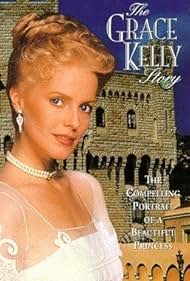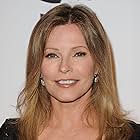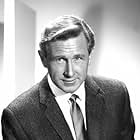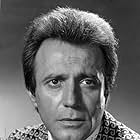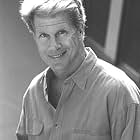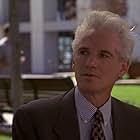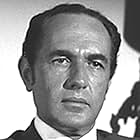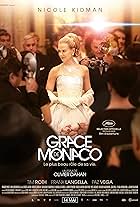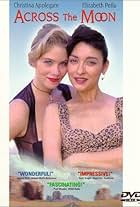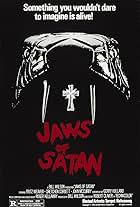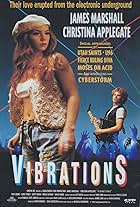The fairy tale story of the actress who became a princess is told in this biography that traces her rise from Philadelphia socialite to Hollywood movie star.The fairy tale story of the actress who became a princess is told in this biography that traces her rise from Philadelphia socialite to Hollywood movie star.The fairy tale story of the actress who became a princess is told in this biography that traces her rise from Philadelphia socialite to Hollywood movie star.
- Director
- Writer
- All cast & crew
- Production, box office & more at IMDbPro
Storyline
Did you know
- TriviaIn the film, Lloyd Bridges plays Grace Kelly's father Jack Kelly. Bridges and Kelly co-starred in High Noon (1952) 31 years earlier.
- GoofsThe Kelly home is supposed to be in Philadelphia, and yet there are palm trees in the back yard.
- ConnectionsFeatures The Wedding in Monaco (1956)
Featured review
In a poem deploring Wordsworth's tendency to fall back upon clichés and platitudes, the satirist J K Stephen berated the poet for informing us "that two and one are three, that grass is green, lakes damp, and mountains steep". I got a similar feeling while watching this biopic of Grace Kelly. Like another reviewer, I felt that it could simply have been a dramatised version of Kelly's Wikipedia entry.
What the film doesn't do is give us any idea of what sort of a person Grace Kelly was. Biopics of famous actresses from the past, especially of those who were noted for their beauty, often suffer from difficulties with casting, as it is not always possible to find a modern actress who bears the necessary resemblance to the woman she is playing, even with the creative use of make-up. Former Charlie's Angel Cheryl Ladd as Kelly might not be quite as obviously miscast as, say, Jennifer Love Hewitt as Audrey Hepburn or (God help us) Lindsay Lohan as Elizabeth Taylor, but even so she is far from convincing. Grace Kelly was almost universally regarded as one of the great beauties of the fifties; I doubt if anyone has really tried to claim Ladd as one of the great beauties of the seventies or eighties. She was also, at 32, rather older than Kelly was during this period of her life. (The film ends with Kelly's marriage at the age of 26).
This discrepancy in looks could be forgiven if Ladd had given a decent performance, but she doesn't. She makes Grace seem like a pleasant person, but a totally forgettable and uninteresting one. We get no idea of just why Grace became one of the most charismatic actresses of her generation and an internationally known celebrity even before she became Princess of Monaco. There is no chemistry between Ladd and the miscast Ian McShane as Prince Rainier. (McShane is best known to British audiences as the rascally antiques dealer Lovejoy from the television series of that name, and is generally at his best when playing working- class or low-life characters; European royalty seems a bit beyond his compass).
Another defect in the film is that it contains no dramatic conflict. A biopic needs to do more than simply narrate the facts; it also needs a narrative structure akin to that of a purely fictitious film, and this can often be supplied by dramatising some conflict or struggle in the life of its subject. A good example is "Florence Nightingale", another filmed biography from around this period starring Ladd's fellow Angel Jaclyn Smith. This film achieves the necessary dramatic tension by making use of two conflicts in Nightingale's life, the external conflict between her and the military authorities, and her own internal conflict between her love for Richard Milnes and her sense of vocation as a nurse. Potentially interesting subjects like her family's initial opposition to her becoming an actress, a profession which her father described as "a slim cut above a streetwalker", or her love for the twice-divorced Oleg Cassini, are skated over. The film totally ignores the fact that Kelly had a number of lovers before marrying Prince Rainier, doubtless because it was an "official" biography, made with Kelly's cooperation. (It was actually released just after her death).
So what does the film tell us? Well, it tells us that Grace Kelly was born in Philadelphia to a wealthy Irish-American family, that she became an actress and a leading movie star of the early fifties and that in 1956 she married Rainier III, Prince of Monaco. It tells us that she appeared in a number of films, including "High Noon", "Mogambo", "Rear Window", "The Country Girl" (for which she won an Oscar), "To Catch a Thief", "The Swan" and "High Society". And it tells us that grass is green, lakes damp, and mountains steep. It could have been so much better; indeed, I doubt if it could have been much worse. 3/10
A goof. In a scene set in 1955 we see a hotel in Cannes with a number of national flags flying outside. Among these is the current national flag of Syria (a horizontal tricolour of red, white and black with two green stars on the white stripe) which did not come into use until 1958. The Syrian flag in 1955 was a horizontal tricolour of green, white and black with three red stars on the white stripe
What the film doesn't do is give us any idea of what sort of a person Grace Kelly was. Biopics of famous actresses from the past, especially of those who were noted for their beauty, often suffer from difficulties with casting, as it is not always possible to find a modern actress who bears the necessary resemblance to the woman she is playing, even with the creative use of make-up. Former Charlie's Angel Cheryl Ladd as Kelly might not be quite as obviously miscast as, say, Jennifer Love Hewitt as Audrey Hepburn or (God help us) Lindsay Lohan as Elizabeth Taylor, but even so she is far from convincing. Grace Kelly was almost universally regarded as one of the great beauties of the fifties; I doubt if anyone has really tried to claim Ladd as one of the great beauties of the seventies or eighties. She was also, at 32, rather older than Kelly was during this period of her life. (The film ends with Kelly's marriage at the age of 26).
This discrepancy in looks could be forgiven if Ladd had given a decent performance, but she doesn't. She makes Grace seem like a pleasant person, but a totally forgettable and uninteresting one. We get no idea of just why Grace became one of the most charismatic actresses of her generation and an internationally known celebrity even before she became Princess of Monaco. There is no chemistry between Ladd and the miscast Ian McShane as Prince Rainier. (McShane is best known to British audiences as the rascally antiques dealer Lovejoy from the television series of that name, and is generally at his best when playing working- class or low-life characters; European royalty seems a bit beyond his compass).
Another defect in the film is that it contains no dramatic conflict. A biopic needs to do more than simply narrate the facts; it also needs a narrative structure akin to that of a purely fictitious film, and this can often be supplied by dramatising some conflict or struggle in the life of its subject. A good example is "Florence Nightingale", another filmed biography from around this period starring Ladd's fellow Angel Jaclyn Smith. This film achieves the necessary dramatic tension by making use of two conflicts in Nightingale's life, the external conflict between her and the military authorities, and her own internal conflict between her love for Richard Milnes and her sense of vocation as a nurse. Potentially interesting subjects like her family's initial opposition to her becoming an actress, a profession which her father described as "a slim cut above a streetwalker", or her love for the twice-divorced Oleg Cassini, are skated over. The film totally ignores the fact that Kelly had a number of lovers before marrying Prince Rainier, doubtless because it was an "official" biography, made with Kelly's cooperation. (It was actually released just after her death).
So what does the film tell us? Well, it tells us that Grace Kelly was born in Philadelphia to a wealthy Irish-American family, that she became an actress and a leading movie star of the early fifties and that in 1956 she married Rainier III, Prince of Monaco. It tells us that she appeared in a number of films, including "High Noon", "Mogambo", "Rear Window", "The Country Girl" (for which she won an Oscar), "To Catch a Thief", "The Swan" and "High Society". And it tells us that grass is green, lakes damp, and mountains steep. It could have been so much better; indeed, I doubt if it could have been much worse. 3/10
A goof. In a scene set in 1955 we see a hotel in Cannes with a number of national flags flying outside. Among these is the current national flag of Syria (a horizontal tricolour of red, white and black with two green stars on the white stripe) which did not come into use until 1958. The Syrian flag in 1955 was a horizontal tricolour of green, white and black with three red stars on the white stripe
- JamesHitchcock
- Jan 8, 2013
- Permalink
Details
- Release date
- Country of origin
- Language
- Also known as
- The Grace Kelly Story
- Filming locations
- Cannes, Alpes-Maritimes, France(Stock footage of La Croisette.)
- Production companies
- See more company credits at IMDbPro
Contribute to this page
Suggest an edit or add missing content

